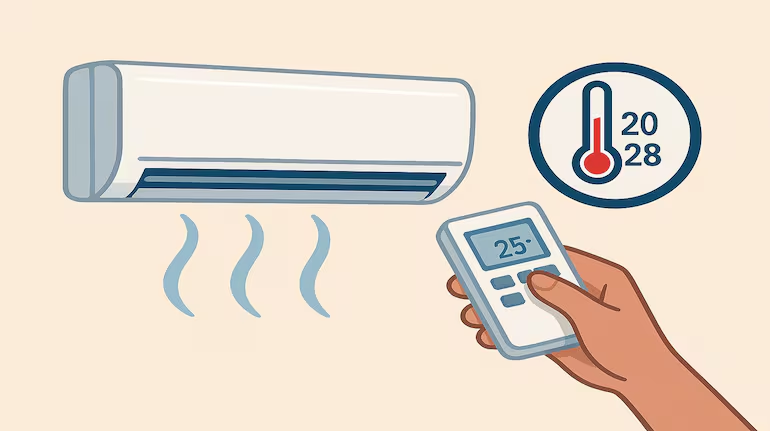Proposed AC temperature-control norms build on 2018 guidelines

Key Facts & Initiatives
2018 Guidelines (Voluntary):
Issued by Bureau of Energy Efficiency (BEE) under Power Ministry.
Targeted commercial establishments (airports, malls, offices, govt. buildings).
Aim: Energy conservation via optimal AC temperature settings.
2020 Mandate:
Default AC temperature set at 24°C (adjustable by users).
2024 Proposal:
Hardwiring ACs to operate within 20–28°C range (non-adjustable).
Rationale: Curb rising energy demand (200 GW projected by 2030).
Global Examples:
Japan mandates 28°C in offices/public buildings.
Key Points
BEE: Statutory body under Power Ministry for energy efficiency.
Connected Load: Total capacity of ACs (50 GW current; 200 GW by 2030).
Peak Power Demand: ~250 GW (2024); cooling demand is 20% of this.
UPSC Mains Relevance
Why This Matters?
Energy Security:
ACs contribute 8–10% of India’s electricity consumption (NITI Aayog).
Projection: 200 GW AC load by 2030 could strain power infrastructure.
Climate Change & Policy:
Links to India Cooling Action Plan (ICAP) 2019 (reduce cooling demand by 20–25%).
Aligns with Paris Agreement (lower emissions via energy efficiency).
Economic & Social Aspects:
Equity Issue: Only 6% households use ACs; norms may impact affordability.
Behavioral Change: Public awareness needed (e.g., Japan’s "Cool Biz" campaign).
Challenges & Criticisms
Enforcement: Hardwiring may face resistance from manufacturers/consumers.
Comfort vs. Conservation: Balancing human comfort with energy savings.
State Coordination: Requires alignment with state electricity regulations.
Government’s Approach
Phased Implementation: 2018 (voluntary) → 2020 (default setting) → 2024 (hardwiring).
Stakeholder Involvement: BEE surveys to assess compliance/impact.
Potential UPSC Questions
Prelims (MCQs)
Q1. The Bureau of Energy Efficiency (BEE) operates under which ministry?
(a) Ministry of Environment
(b) Ministry of Power
(c) Ministry of Renewable Energy
(d) Ministry of Science & Technology
Ans: (b)
Mains (GS-3: Energy/Environment)
"Examine the rationale behind India’s proposed hardwiring of AC temperature limits. Discuss its potential impact on energy security and climate goals."
"Critically evaluate the challenges in implementing uniform cooling norms across diverse climatic zones in India."
